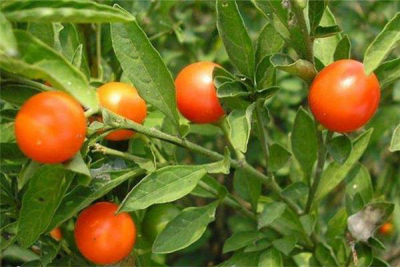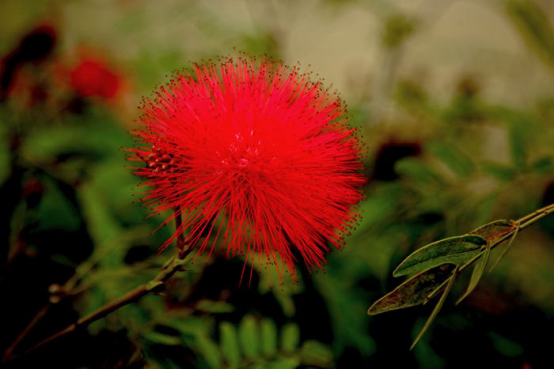Matters needing attention in the reproduction of winter coral
1. Reproductive methods.
Winter corals are generally propagated by seeding or cuttage, spring by seeding or cuttage, and autumn by cuttage.
2. Diseases and pests.
Winter coral is prone to anthracnose disease in summer, affecting the growth of stems and leaves. When the disease occurs, the leaves affected by the disease can be cut off and treated by spraying liquid medicine. The winter coral pests are mainly aphids, can be used to spray pesticides for pest control.

Winter coral pruning precautions
Winter coral trees themselves are very elegant and beautiful, planted outdoors without pruning also have a high ornamental value. However, potted winter corals need to be pruned because of the environment and the size of the pot.
However, it should be noted that if the winter coral just planted or propagated in that year is not pruned, because the winter coral plants grown in that year are still relatively weak, if pruning is easy to affect the healthy growth of plants, it is generally the second year to start pruning winter coral.
Winter coral breeding methods and precautions introduced
winter coral
Balcony new favorite winter coral alias called Jiqing fruit, four seasons fruit, coral beans, etc., its fruit in addition to the color and cherry is very similar, in addition to the shape and small tomato is very similar, plant short it to the harvest season can bear the whole flower branch, suitable for potted plants, breeding methods are also very simple, below we elaborate on the winter coral breeding methods and precautions.
1. Growth Habits of Winter Coral
It is especially common in fields, roadsides, jungles or ditches, common in areas with an altitude of 1350-2800 meters, and also distributed in areas with an altitude of 600 meters.
Winter corals like sunshine, warm, high temperature, above 35℃ without sunburn phenomenon. Not tolerant of shade, nor cold, drought, hot summer afraid of rain, waterlogging. It is not strict with soil requirements, but it grows vigorously on fertile, loose, well-drained slightly acidic or neutral soil. Strong initiation. Not cold-resistant, northern potted ornamental need to enter the greenhouse winter.
2. What are the breeding methods of winter corals
Winter coral propagation usually adopts cuttage propagation and seeding propagation. Cuttage propagation is suitable for spring and autumn, sowing time is March to April in spring.
1. seeding method
Winter harvest mature seeds after rinsing and drying, the next year before the Qingming sowing, a small amount of reproduction can be carried out in flower pots, the seeds evenly scattered on the top, covered with a thin layer of soil, and then soaked in water in the basin. In order to keep moist, the flowerpot mouth should be covered with glass or plastic film, so that it can germinate in about a week, and when new leaves grow, seedlings can be transplanted. If you want a large number of seedlings, available seedbed sowing, seed with a fine hole spray pot spray water, after seeing dry spray, keep moist can, transplant after a thin fertilizer, and placed in sufficient light.
2. cuttage method
When cutting, cut (or thin cut) about 8~10 cm long with terminal bud growth branches (if there are flower buds will be removed), according to the conventional method of cutting, keep the seedbed or pot soil moist, regularly spray water mist to the terminal bud, top leaf cutting, temperature between 18~28℃, about 10 days can survive. If the roots of cuttage seedlings developed, plant low, suitable for cultivation into a small view of the fruit pot flower. After autumn cuttage, winter can appreciate the red fruits.
winter coral
3. Prevention and control of diseases in winter coral reproduction precautions
Potted winter corals are prone to anthracnose at high temperatures in summer, mainly damaging leaves and stems. There are two symptoms: one occurs on the leaves, showing round spots on the leaves at the initial stage of the disease, turning from round reddish brown to gray, then turning black brown and producing black spots arranged in rings, i.e. conidia disk of the pathogen. The disease occurs on the leaf margin and leaf tip, and when it is serious, the leaves are withered and black. The pathogen is fungal disease, the pathogen overwinters in parasitic residue or soil as mycelium, the old leaves begin to develop from late April to early May, the disease occurs faster from June to July, the disease is more serious in rainy season, and the new leaves begin to develop from August. Potted flowers placed too close, leaves cross each other easy to transmit disease, but there are differences in disease resistance among varieties.
IV. Control methods
1. Select disease-resistant varieties.
1. At the early stage of the disease, cut off the diseased leaves and burn them in time to prevent the spread of germs, avoid placing them too densely and watering them, and keep them ventilated and transparent.
4. At the early stage of disease, spray 700-800 times solution of 50% carbendazim wettable powder or 500 times solution of 75% chlorothalonil.
5. Pest control: winter coral pests are mainly aphids, small in size, green or black, often clustered in a variety of flowers on the tender branches and leaves to sting nutrition.
6. Control methods: 40% omethoate emulsion oil 2000 times or 50% dichlorvos EC 1500-2000 times liquid spray.
The reason why winter coral disease prevention and control to reproduction precautions this is mainly because, if there is no healthy plant how can reproduce excellent winter coral! So whether it is sowing or cuttage should choose good substrate.
- Prev

Matters needing attention in the maintenance of Zhu tasseled flowers
Soil red tasseled flower is an imported variety, which likes warm, moist and sunny environment, is not cold-resistant, and does not have high requirements for soil. As long as the soil layer is deep and well drained, it can grow well. Water and fertilizer Zhu tasseled flower has a great demand for water and fertilizer.
- Next

Cultivation method of multicolored taro
1. Colored taro is a tropical plant, warm sex, suitable temperature for growth between 25-30℃, winter temperature control at 15-20℃, otherwise it will make the leaves yellow, plants wither. 2. Light colorful taro natural love sunlight, lack of light will make colorful taro leaves on the spot color will be dark, leaves weak
Related
- Fuxing push coffee new agricultural production and marketing class: lack of small-scale processing plants
- Jujube rice field leisure farm deep ploughing Yilan for five years to create a space for organic food and play
- Nongyu Farm-A trial of organic papaya for brave women with advanced technology
- Four points for attention in the prevention and control of diseases and insect pests of edible fungi
- How to add nutrient solution to Edible Fungi
- Is there any good way to control edible fungus mites?
- Open Inoculation Technology of Edible Fungi
- Is there any clever way to use fertilizer for edible fungus in winter?
- What agents are used to kill the pathogens of edible fungi in the mushroom shed?
- Rapid drying of Edible Fungi

